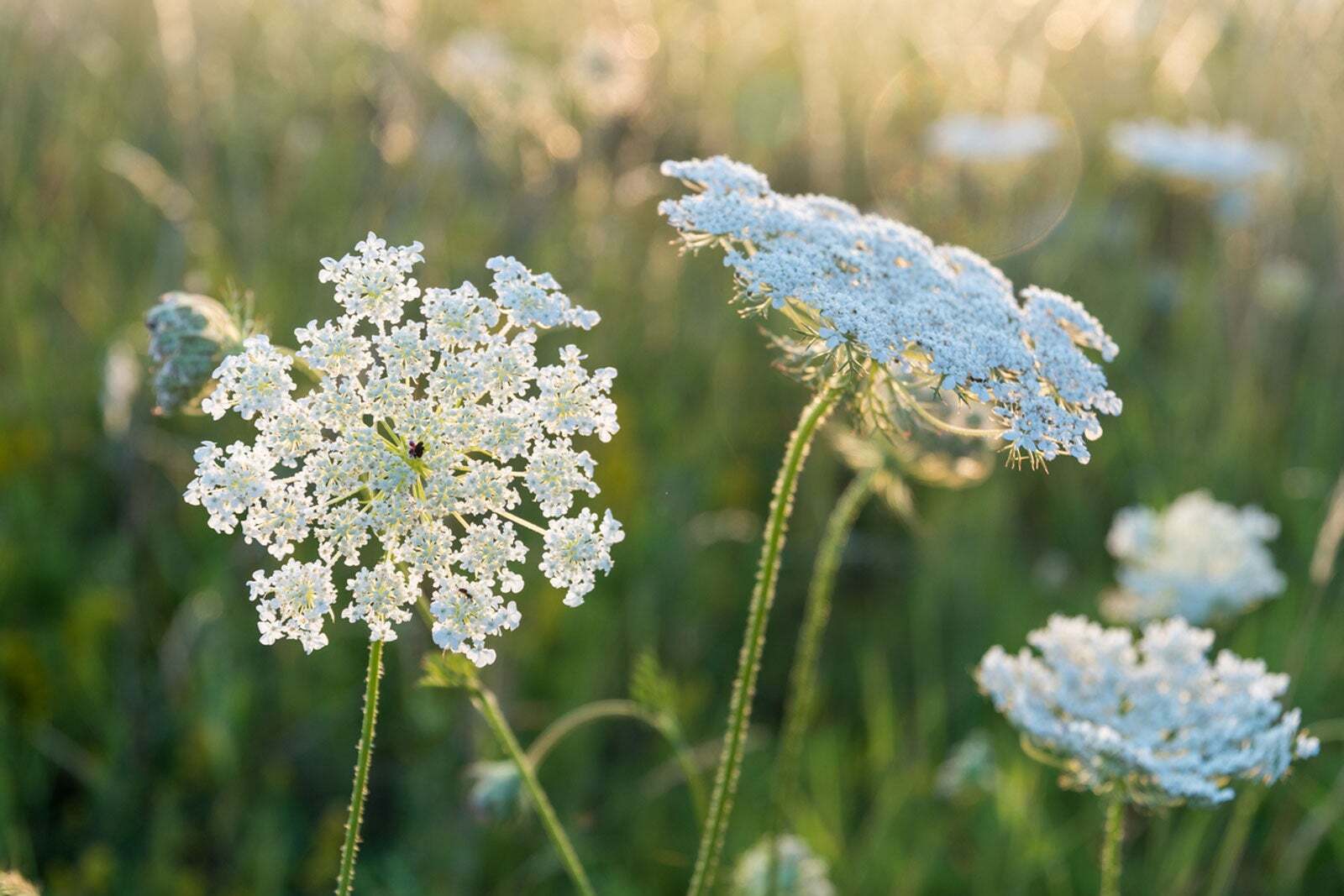
Queen Anne's Lace, also known as wild carrot, is a fascinating plant with a rich history and unique characteristics. Did you know that this delicate flower is named after Queen Anne of England, who was an expert lace maker? Legend says she pricked her finger while making lace, and a single drop of blood fell onto the flower, creating its dark center. But that's not all—Queen Anne's Lace has edible roots that taste like carrots, and its seeds were once used as a natural contraceptive. Intrigued yet? This plant also plays a crucial role in attracting beneficial insects to gardens. Let's dive into 22 captivating facts about Queen Anne's Lace that will leave you amazed and informed!
What is Queen Anne's Lace?
Queen Anne's Lace, also known as wild carrot, is a fascinating plant with a rich history and unique characteristics. Let's dive into some intriguing facts about this plant.
-
Scientific Name: The scientific name for Queen Anne's Lace is Daucus carota.
-
Common Names: Besides Queen Anne's Lace, it is also called wild carrot, bird's nest, and bishop's lace.
-
Appearance: This plant has a flat-topped cluster of tiny white flowers that resemble lace, hence the name.
-
Central Flower: Often, a single dark purple or black flower can be found in the center of the cluster.
Historical Significance
Queen Anne's Lace has a rich history that spans centuries. Here are some historical facts about this plant.
-
Named After Royalty: Named after Queen Anne of England, who was an expert lace maker.
-
Medieval Medicine: In medieval times, it was used for medicinal purposes, including as a diuretic and to treat digestive issues.
-
Ancient Roots: The plant has been used since ancient times, with records dating back to the Greeks and Romans.
-
Symbolism: In folklore, the central dark flower symbolizes a drop of Queen Anne's blood from pricking her finger while making lace.
Growth and Habitat
Understanding where and how Queen Anne's Lace grows can provide insight into its adaptability and spread.
-
Native Range: Originally native to Europe and southwest Asia, it has spread to North America and other regions.
-
Habitat: Prefers sunny locations with well-drained soil, often found in fields, meadows, and along roadsides.
-
Biennial Plant: It is a biennial plant, meaning it completes its life cycle in two years.
-
Invasive Nature: Considered invasive in some areas due to its ability to spread rapidly and outcompete native plants.
Uses and Benefits
Queen Anne's Lace is not just a pretty plant; it has various uses and benefits.
-
Edible Roots: The roots of young plants are edible and taste similar to cultivated carrots.
-
Herbal Medicine: Used in herbal medicine to treat various ailments, including kidney stones and urinary tract infections.
-
Pollinator Attraction: Attracts beneficial insects like bees and butterflies, aiding in pollination.
-
Natural Dye: The flowers can be used to create a natural dye for fabrics.
Interesting Facts
Here are some more intriguing tidbits about Queen Anne's Lace that you might not know.
-
Carrot Ancestor: It is the wild ancestor of the domesticated carrot we eat today.
-
Seed Dispersal: The seeds have tiny hooks that help them cling to animal fur and clothing, aiding in dispersal.
-
Flower Shape: As the flowers mature, they curl inward, forming a bird's nest shape.
-
Toxic Look-Alike: It closely resembles the toxic poison hemlock, so caution is needed when foraging.
-
Culinary Use: The flowers can be used to make a delicate, aromatic jelly.
-
Cultural Symbol: In some cultures, it symbolizes sanctuary and protection.
The Final Word on Queen Anne's Lace
Queen Anne's Lace, with its delicate white flowers and rich history, offers more than just beauty. This plant, also known as wild carrot, has been used for centuries in various cultures for its medicinal properties. Its intricate blooms attract beneficial insects, making it a gardener's ally. However, it's essential to distinguish it from its toxic look-alike, poison hemlock. While Queen Anne's Lace can be a charming addition to gardens, it can also become invasive if not managed properly. Whether you're a history buff, a gardening enthusiast, or someone who loves nature's wonders, understanding Queen Anne's Lace adds a layer of appreciation for this fascinating plant. So next time you spot those lacy white flowers, you'll know there's more to them than meets the eye.
Was this page helpful?
Our commitment to delivering trustworthy and engaging content is at the heart of what we do. Each fact on our site is contributed by real users like you, bringing a wealth of diverse insights and information. To ensure the highest standards of accuracy and reliability, our dedicated editors meticulously review each submission. This process guarantees that the facts we share are not only fascinating but also credible. Trust in our commitment to quality and authenticity as you explore and learn with us.


